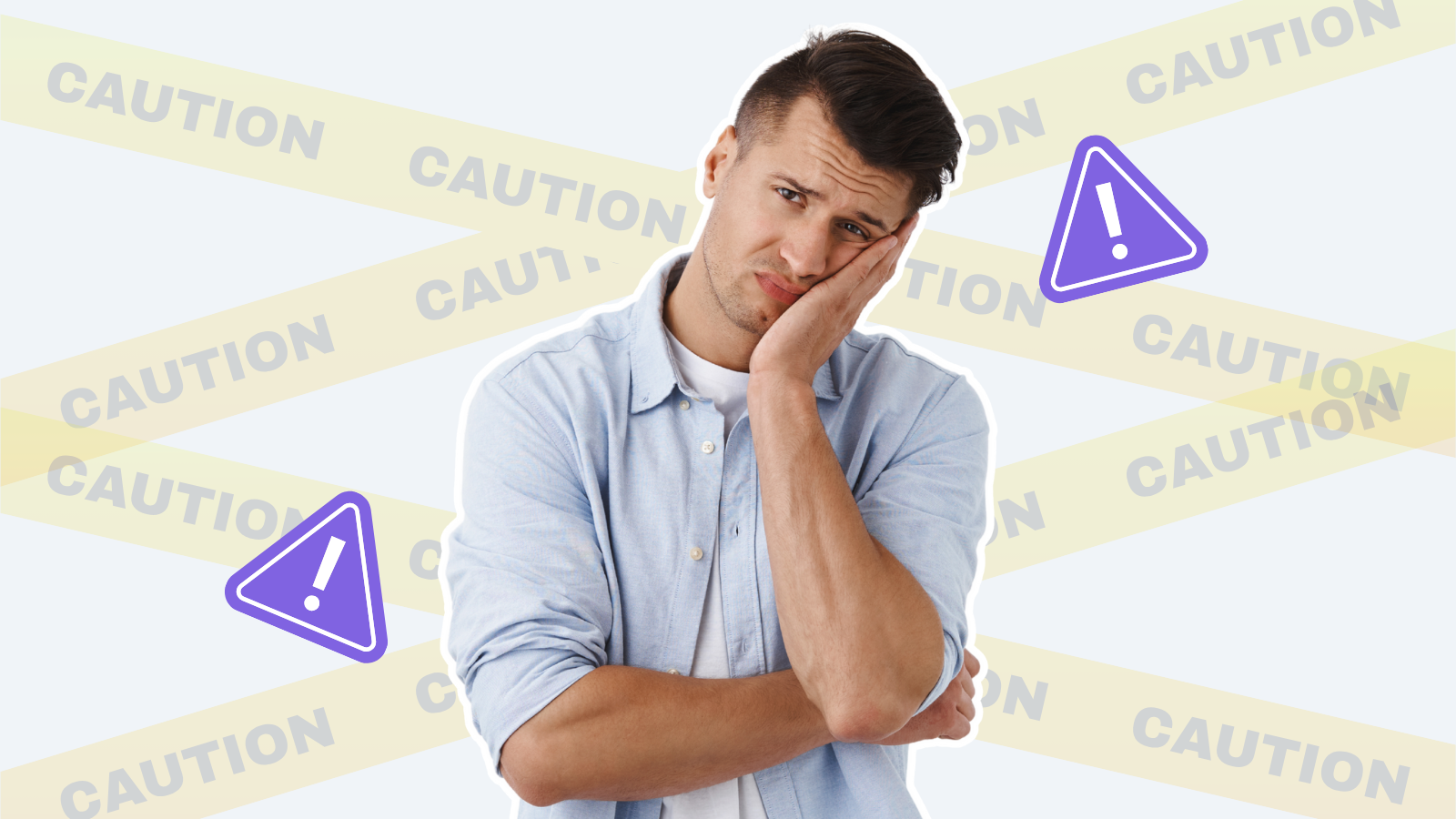
Is Shopify Payments Holding Your Money?

Is Shopify Payments Holding Your Money?
Congrats! You've just built an amazing website. After your online store went live, you started getting lots of orders from all over the world. You're excited about shipping your products, but Shopify Payments has a hold on all of your funds because of your perceived risk. Shopify will then decide whether or not they should keep the money you need to run your business. Having funds withheld is a fairly common problem that many merchants face. Imagine how frustrating it would be if all of your payments were held for weeks or months because your payment provider had doubts about the legitimacy of your business or some of your transactions. This can simply hinder your ability to run your business, which can be detrimental. In this article, we'll explore why Shopify Payments would hold your funds and what you can do to prevent it.
Why would Shopify Payments hold my funds?
They're verifying your identity...
When you first sign up for Shopify Payments, they need to verify that the information you provided is accurate. The more complete your account details, the faster you'll be verified. For example, make sure to include your contact phone number and correct email address in your account settings. The most common reason why merchants fail to complete the verification process is because they entered incorrect information when they initially set up Shopify Payments.
For example: entering an abbreviated version of their name (instead of the full legal name)
You've added a card that needs to be verified...
If you add an unverified payment method to Shopify Payments, Shopify might temporarily hold the funds from your transactions until they can verify the card. When you add a new card to your Shopify Payments account, Shopify will send a small authorization charge for verification. If the charge is declined, this means that the card details were entered incorrectly. To prevent fraud, Shopify will temporarily hold your funds until they can confirm the accuracy of your payment information.
You've recently added a new bank account...
In order to verify a new bank account, Shopify Payments will attempt to make two deposits into it. During this time, you won't be able to withdraw money that has been deposited into the new bank account until it's been verified. To ensure accurate delivery of bank verification deposits into the right account, you are advised to wait five business days before initiating any withdrawals from Shopify Payments for this bank account. It's noted that this verification process is only required if you have a new bank account or if you have made changes to your existing account.
You live in a high-risk country/region or operate in a high-risk industry....
Due to the high volume of fraudulent activity from merchants in certain countries or industries, Shopify Payments might temporarily hold funds from transactions as part of their fraud prevention process. If you would like to see what countries/regions that Shopify Payments is willing to accept, please refer to their requirements found here: Shopify Payments Requirements.
In addition, you can lose access to your funds if you try to use Shopify Payments to sell prohibited items that are not within their guidelines. Some products or services that you offer may be deemed too high risk for Shopify and they may not be able to support your business. If you're interested in viewing Shopify's restricted list you can learn more here: Shopify Restricted Items.
You may have a 14-day hold...
Sometimes, when you first start selling with Shopify Payments, your money might get held for a few weeks. The reason behind this is simple. A lot of merchants are brand new at starting their own business, and as a result, they may not have the best reputation with customers yet. Shopify wants to make sure that when you sell something on their network, it's something you can actually deliver to your customers. Since you're still new to Shopify Payments and have not yet established a track record of success, there's a chance that your money will be held for up to 14 days. This gives their team time to monitor the validity of your orders. In this scenario, your best bet is to wait this out and see what their team decides.
The most common reason why Shopify Payments holds funds is simple; they approve your account prior to feeling comfortable doing business with you. Unlike Shopify Payments, Redde does all of the investigative work upfront. By the time a merchant is approved, they gain access to a fully functioning account with no holds. This is because our approved merchants have already been properly vetted. Shopify Payments allow their customers to run transactions in an environment that isn't truly operational until their merchants prove themselves legitimate, which isn't very fair.
If you are still unable to get your funds released from the hold, you should contact Shopify Payments support to request more information. Getting more details from their team can help you get a better understanding of why the hold was initiated in the first place.
How can I prevent Shopify Payments from holding my funds?
As mentioned before, you should start by making sure that:
- The items you sell aren't on their list of prohibited goods.
- Shopify can do business with you wherever you are located.
- Your business isn't too high-risk and on their restricted list.
If the above doesn't apply to you, then there are a few things you can do to make sure your funds clear faster.
Check your chargeback ratio
First, you'll want to check out your store's chargeback rate. If it's higher than 1%, Shopify may hold your funds until they can get a better understanding of your business. If you don't know what a chargeback is or how to check the rate, we've got you covered.
A chargeback is when money is returned to a customer for a transaction after the customer successfully wins a dispute with their bank. When a customer wants to dispute a transaction that was made with their card, they contact their bank and provide reasoning for the dispute.
The bank will then collect this information and formally file the dispute which becomes a chargeback case. If the bank finds that the customer’s dispute is valid and warranted, they will return the customer's funds for the transaction. If your chargeback rate is too high, you should try to get it lower so that your funds can become available sooner.
Your chargeback rate can be calculated by dividing the number of chargebacks your business has received in your calendar month by the number of sales you have run within the same month. This will give you a chargeback ratio for your business for the particular month you are researching. It's important to consider both your current month and previous month's chargeback performances.
Considering refund amounts
Refund amounts can affect how long it takes for funds to be released. It's important to understand that Shopify Payments will hold onto your money longer if you're giving out too many refunds. If this sounds like something that might be affecting you, consider some of the reasons that your customers are asking for refunds for your products or services. Making changes to your business model can help in reducing the frequency of times that you have to issue a credit to a customer.
Stay in touch with their risk department
Finally, if you've been using Shopify Payments for less than 90 days, or if they flagged your account as "high-risk", Shopify may decide to hold your funds based on your business being a start-up and having too many orders too fast. This can ultimately cause the risk team to put your account on review, or even worse, issue refunds to all your customers. It's important to keep track of how many orders you anticipate taking and if you see a trend in sales. When in doubt, get in touch with the risk team to see what volume you are allowed to run so that way you don't end up ruining your relationship with Shopify Payments.
What to do if Shopify Payments is holding your funds?
First, if you see Shopify is holding all or part of your payments, go through the usual steps and make sure you've done everything you were supposed to do: send in invoices and provide proof of shipment. If you've already done that and your funds are still being withheld, try contacting Shopify support through the chat option at the bottom right corner of the main page of your online store (https://help.shopify.com/). The agents there are generally helpful, but be aware that they may not have answers for you right away—they may just be able to tell you that they'll pass your message along to the team managing Shopify Payments.
OR
If you've received an email from Shopify Payments stating that your funds have been held, you should review the risk assessment to determine why the hold was placed. If you still want to use Shopify Payments, you can take the listed steps in the email to release the hold and remove the risk factors that affected their decision. If you don't want to use Shopify Payments, then you can close your account and request a refund of any held funds.
The best route to take when Shopify Payments holds your funds is to reach out to them directly. We wish we could tell you that they will give you a clear and concise reason as to why the hold was put in place. With our experience, it varies depending on the situation and merchant. However, trying to resolve the matter with them directly is always the best option for potential resolution.
Conclusion
As a small business owner, it is important to receive your deposits on time. Having the funds to fulfill your orders and manage your business is crucial to ensuring you have happy customers. Your payment processor should not be your biggest obstacle to overcome in running your business.
If you want to avoid payment holds and chargebacks, then it's important you make the appropriate changes on your end. You should be proactive in your business and avoid potential holds from the very start. This is the best way to make sure no payments are lost, or that you don't have to compromise with your business. If a hold does happen, don't worry, there are some steps you can take to get things back on track more quickly. Work with a payment processor like Redde Payments who can work with you to avoid this from happening. We can help you set up an account with tailored parameters that will meet your business needs.
With Redde, when your account is approved, you're approved. This means no holds or last minute verifications. Our merchants appreciate our honesty and upfront due-diligence, which is why our customers continue to stay happy. Open up a permanent account with Redde. We would be happy to show you how payments should be.
Let's get you running payments!





.png)
.png)




.png)

